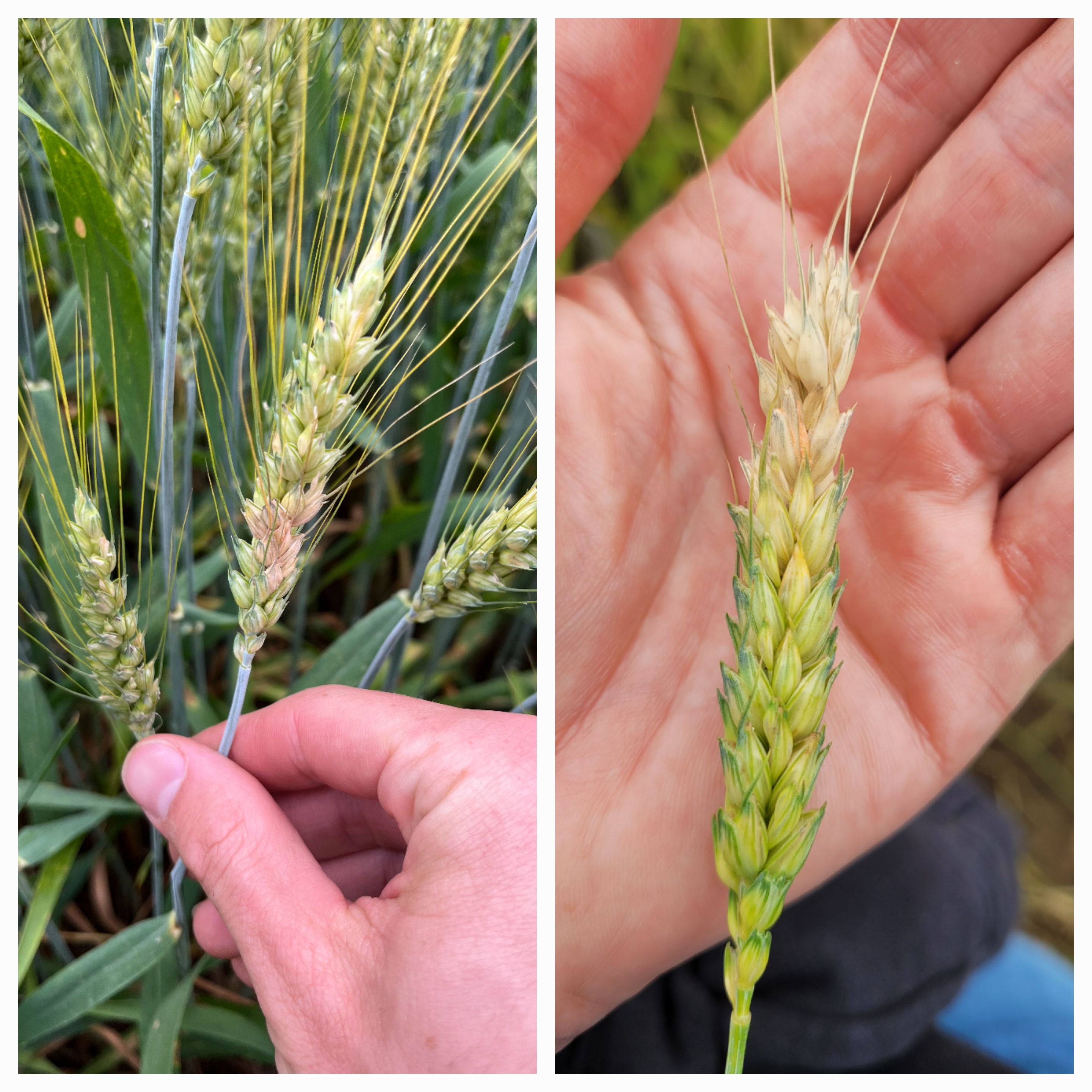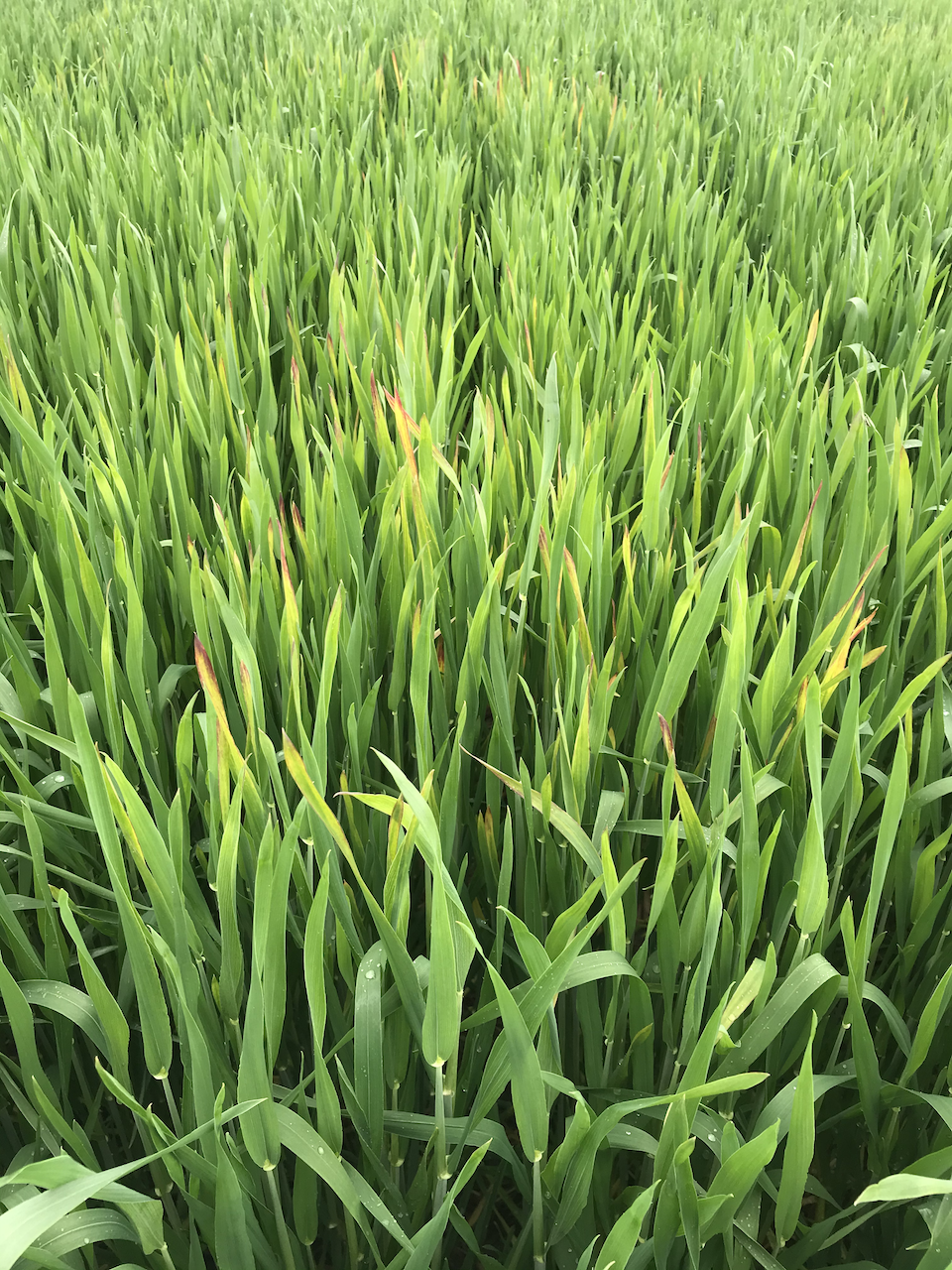What Are the Pale Patches in Wheat Fields This Year?
go.ncsu.edu/readext?1003717
en Español / em Português
El inglés es el idioma de control de esta página. En la medida en que haya algún conflicto entre la traducción al inglés y la traducción, el inglés prevalece.
Al hacer clic en el enlace de traducción se activa un servicio de traducción gratuito para convertir la página al español. Al igual que con cualquier traducción por Internet, la conversión no es sensible al contexto y puede que no traduzca el texto en su significado original. NC State Extension no garantiza la exactitud del texto traducido. Por favor, tenga en cuenta que algunas aplicaciones y/o servicios pueden no funcionar como se espera cuando se traducen.
Português
Inglês é o idioma de controle desta página. Na medida que haja algum conflito entre o texto original em Inglês e a tradução, o Inglês prevalece.
Ao clicar no link de tradução, um serviço gratuito de tradução será ativado para converter a página para o Português. Como em qualquer tradução pela internet, a conversão não é sensivel ao contexto e pode não ocorrer a tradução para o significado orginal. O serviço de Extensão da Carolina do Norte (NC State Extension) não garante a exatidão do texto traduzido. Por favor, observe que algumas funções ou serviços podem não funcionar como esperado após a tradução.
English
English is the controlling language of this page. To the extent there is any conflict between the English text and the translation, English controls.
Clicking on the translation link activates a free translation service to convert the page to Spanish. As with any Internet translation, the conversion is not context-sensitive and may not translate the text to its original meaning. NC State Extension does not guarantee the accuracy of the translated text. Please note that some applications and/or services may not function as expected when translated.
Collapse ▲Across the state we have seen some pale patches in wheat fields. This article describes some of the more common causes of these patches, and whether or not we should be concerned about grain quality in those fields.
There are three common causes of these patches in 2024: Take-all, Barley Yellow Dwarf Virus, and Fusarium head blight.
- Take-all
Take-all is a soilborne disease of wheat that causes stunting, yellowing and patches of “white-heads,” which are empty of grain. The pathogen is the soilborne fungus Gaeumannomyces graminis. Take-all can be diagnosed from shiny black discoloration at stem bases when the lower leaf sheaths are peeled back. Also diagnostic are the stubby, seared-looking roots.

One way to distinguish take-all from BYVD and scab is to look at the base of the stem and the roots for blackened stems and damage to the roots. Photo: Steve Gibson
The empty white-heads occur because the fungus destroys the roots and blocks the vascular system, so the grain heads do not fill because they don’t get water and nutrients. White-heads often occur in small or even large patches, although they can appear individually as well. Grain quality in plants without take-all damage is not affected.

Symptoms of Take-all include: white heads; pale patches in the field; black, shiny stems; and small roots.
Take-all usually does not cause large economic losses in North Carolina. It seems to be more severe following a relatively dry fall planting season where the soil is fine-textured and well oxygenated. Take-all is particularly a problem when wheat follows wheat too frequently. There is no chemical control or known variety resistance, but rotation with crops other than grasses and small grains, as well as maintaining optimal soil pH, will help prevent future problems.
2. Barley Yellow Dwarf Virus (BYDV)
This virus is transmitted by aphids and can be a result of both fall and spring aphid infestations. The earlier in the plant’s life cycle that it is infected, the more severe the yield reduction will be. We have seen considerable numbers of fields with patches of BYDV this year from spring infections. At this point in the growing season the flag leaves will be yellow, reddish or purple.
These patches are relatively easy to spot since they are often about 5-6 feet in diameter and may have discolored flag leaves. In years like this one, discolored flag leaves may be very widespread, instead of in patches. NC State and USDA are collaborating to improve management of BYDV for our growers. The Bdv2 gene provides excellent resistance to BYDV in wheat.
3. Fusarium Head Blight, FHB, “head scab”
This disease has been observed in minor amounts as predicted by the forecasting tool other than a trial site in Union County. Scab is caused by the fungus Fusarium graminearum. This fungus may produce DON, the vomitoxin that can reduce grain marketability and yield, and therefore is of serious concern. However, in years like this one when the period of wheat flowering was dry, losses due to scab are expected to be minimal.

Common symptoms of scab are the two-tone heads, where some parts are green and other areas are discolored. Salmon colored areas are signs of the scab fungus. Scab at this level of severity in a field like the one on the left is unlikely to cause grain quality concerns.
The research site in Union County had high amounts of corn residue that had not yet broken down. Corn residue is known to harbor the fungus. There must have been timely levels of high ambient moisture leading to high relative humidity near the ground which is conducive to Fusarium development and infection. The local conditions at that site during wheat flowering were more conducive to scab development than in surrounding areas. Scab can only infect wheat just before and during the flowering period. The best defense against scab is genetic resistance from a variety that has a Moderately Resistant (MR) rating.
Summary
In all of the commercial fields scouted in May 2024 in Lenoir, Cumberland, Montgomery, Rowan, Cleveland and Union counties, the scab incidence was minimal. Upon closer examination of pale patches in fields, many turned out to be Take-all. This disease produces white heads that could be confused with scab, but no toxins. One key difference between take-all heads and scabby heads is that with scab, many heads will be two-tone – part green and part bleached –while white-heads from Take-all are fully bleached and quite pale. These fields also had substantial BYDV symptoms– mostly yellow upper leaves, in a few cases some mild stunting. It is important to note that the NC State Plant Disease and Insect Clinic has not received any wheat samples that were positive for wheat soilborne mosaic virus or wheat spindle streak mosaic virus this year. Overall, we are not expecting significant issues with scab or DON in wheat in North Carolina in 2024.
This post was co-authored by Jenny Carleo, Area Specialized Agent – Grain Crops, Morgan Menaker Field Crops Agent – Union County; and Dr. Christina Cowger, Small Grains Pathologist, USDA and NC State University.



